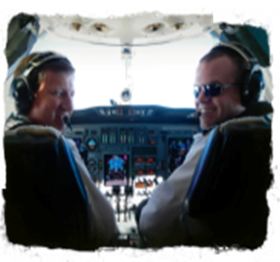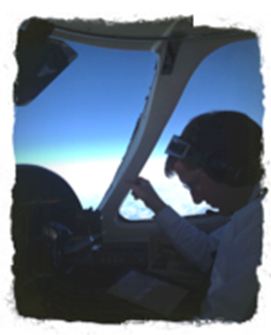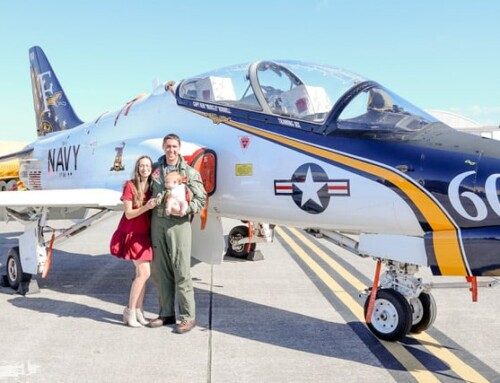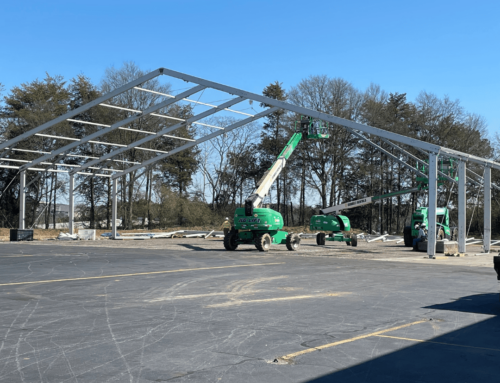From the Director
A flight crew is multi-pilots working together as one unit in the cockpit, contributing their best effort to accomplish a common goal. This accomplishes the highest levels of flight safety. Individual prominence degrades cockpit operational performance.
 Flight crews are made up of diverse individual personalities, experience, and attitudes. To function as a crew, they must work as one unit with clearly defined and understood assignments and responsibilities. This is commonly called the “crew concept.” Each crew has pilot in-command (PIC) and a pilot in-second command (SIC).
Flight crews are made up of diverse individual personalities, experience, and attitudes. To function as a crew, they must work as one unit with clearly defined and understood assignments and responsibilities. This is commonly called the “crew concept.” Each crew has pilot in-command (PIC) and a pilot in-second command (SIC).
The PIC is in responsible and in charge of the entire operation. Command authority cannot be delegated or shared. Subsequently, command alone does not build the crew. Crew building requires leadership, management, coaching, early situation recognition, and good communication. Crew cockpit roles and task workload assignments should be clearly defined. Standard operating procedures (SOP) should be set and implemented to facilitate operations.
Leadership is necessary to move the entire flight operation toward a safe completion of an assigned flight. Leadership is expected from all crewmembers, unlike PIC authority that is vested. Although, most of the leadership is expected from the PIC, designated leadership associated with specified task
by the SOP or PIC, contributes to crew effectiveness. The perception by other crewmembers that the caption is taking charge through leadership strengthens crew cohesion or team play, thus a better cockpit environment and effective safety.
Situational leadership affects the outcome of flight conditions and events. The crewmember with the highest level of situational awareness of a condition must communicate the concern to the other crewmember. Good communication raises crew awareness and allows them, earlier than later to deal with the situation. This also shows good situational leadership.
Although they are different styles of leadership, a good leader will adapt to crewmember personality, attitude, and experience. The type leadership, in my opinion, depends greatly on how others perceive you, crew relationship, attitude, behavior, proficiency, and experience level.
 Good cockpit resource management (CRM) is another element to fight crew environment. Managing cockpit workload requires situation awareness and staying ahead of flight progression. Flying the airplane and not letting it fly you requires good management. Cockpit management reduces workload, improves safety, and helps with good crew relationships. Manage a progressive flight mode workload. Allow time for checklist to be completed without rushing; do not call for a task when the PNF is talking to ATC; allow time for learn the difference between leadership and command. A good commander may not necessarily be a good leader.
Good cockpit resource management (CRM) is another element to fight crew environment. Managing cockpit workload requires situation awareness and staying ahead of flight progression. Flying the airplane and not letting it fly you requires good management. Cockpit management reduces workload, improves safety, and helps with good crew relationships. Manage a progressive flight mode workload. Allow time for checklist to be completed without rushing; do not call for a task when the PNF is talking to ATC; allow time for learn the difference between leadership and command. A good commander may not necessarily be a good leader.
Commanders do not usually look for conflict resolution, whereas, a good leader will work toward an acceptable position of agreement.
A preflight briefing sets up a crew to establish the goals and task, as well as provides an open dialogue for feedback, questions, and/or concerns. Once the communication has established, then the crew can agree on a resolution: leadership not authority.
Effective communication enhances cockpit team management. Cockpit advocacy is required for complete effective communication. Post flight briefings are also
invaluable to build relationships, knowledge and applied experience. Post flight briefings are a way great tool for crew (team) evaluation.
All SSC pilots are programmed to advocate in the cockpit regardless of rank, name, or serial number! We believe this contributes to safety.
There are channels set for objective dissent and constructive criticism, but the cockpit is never the place or time. Crewmembers should be able to express themselves through these channels without fear of retaliation. SSC promotes free and open communication to conflict resolution. We also strongly encourage this not to be postponed or disregarded. The sooner the problem is properly addressed, generally the more effective the outcome. Crewmembers should be able to resolve conflicts between themselves, but if not, management should be consulted. This too is in the best interest of safety.
SSC understands the importance and paramount necessity of a flight crew performing as a unit. Flight crew roles and responsibilities must be defined, understood, and performed with a high level of shared situational awareness, duties, and responsibilities as a crew.
Command and leadership are set apart to understand their differences allowing one to enhance the other. Crew ability to evaluate outcomes, using all available resources, and reprioritize accordingly, leads to good decision making.
SSC strives to cultivate an environment that helps develop the practical skills of effective cockpit leadership. The affect breeds flight operation safety and efficiency through a motivated and cooperating flight crew using the “crew concept.”
The matter of fact is that it is never wrong to do right.
This is extremely important to a SSC flight crew.






Leave A Comment